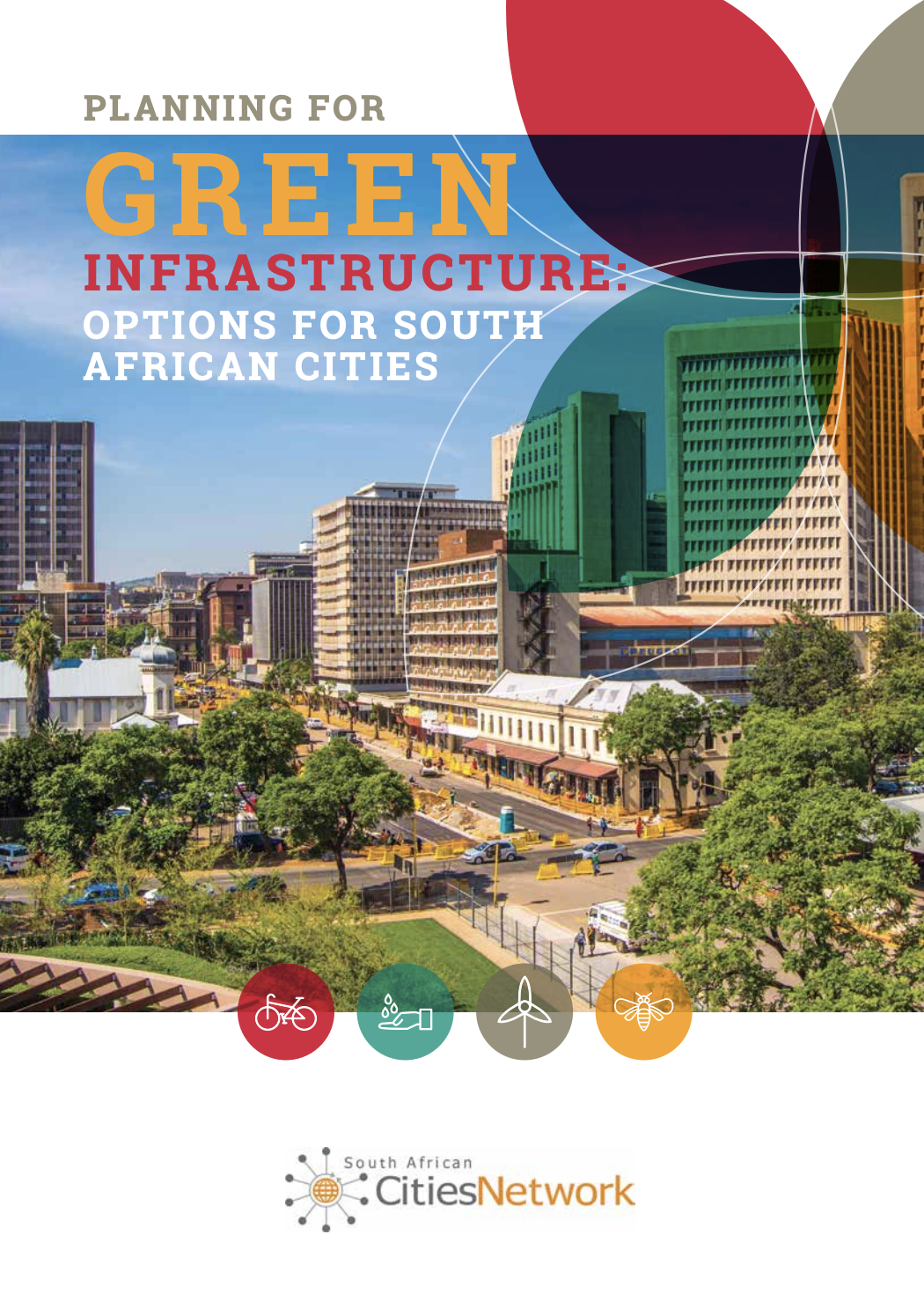Planning for Green Infrastructure: Options for South African Cities

02 August 2016
Ngomso Research, Writing and Editing Service
English
Meeting summary / report
Africa
The South African Cities Network promotes shared learning partnerships between different spheres of government to support the management of South African cities. It analyses the problems facing the cities, particularly in the context of national development challenges. This paper argues that cities need to explore ways of planning and land-use for the natural and built environment to co-exist for community benefit. To achieve this, cities may need to discuss intergovernmental cooperation. Such discussions can be difficult because they deal with a wide range of issues at a regional scale, across catchment areas, regional climates or broad ecological perspectives. These issues include integrative concepts of resource efficiencies, the water-energy-food nexus, integrated water resource management (IWRM) and resource decoupling. As cities are defined by relatively small administrative boundaries, it can be difficult for them to apply such (broad) concepts and approaches. South Africa’s cities need to find ways of embedding sustainability into their mainstream planning, management, monitoring and evaluation. For many years, there has been a focus on urban liveability and green infrastructure planning.
It is, however, challenging to integrate spatial planning and green infrastructure, especially in city contexts where land use decision-making has to address the demand for housing and other services. In this sense, green land uses are competing against other uses and, when considering limited budgets and urban space, green land uses are often not regarded as priorities. This is also exacerbated by the apartheid legacy. Embedding sustainability thinking into city planning means providing a multitude of services (economic, social and environmental), allocating responsibilities for managing land and monitoring the efficient consumption of resources. This paper aims to inform and encourage cities to do such, within current planning approaches and strategies. It highlights the benefits of green infrastructure (and ecosystem services) for communities and explains how green assets and ecological systems can function as part of the infrastructure that supports and sustains society and our cities.



Comments